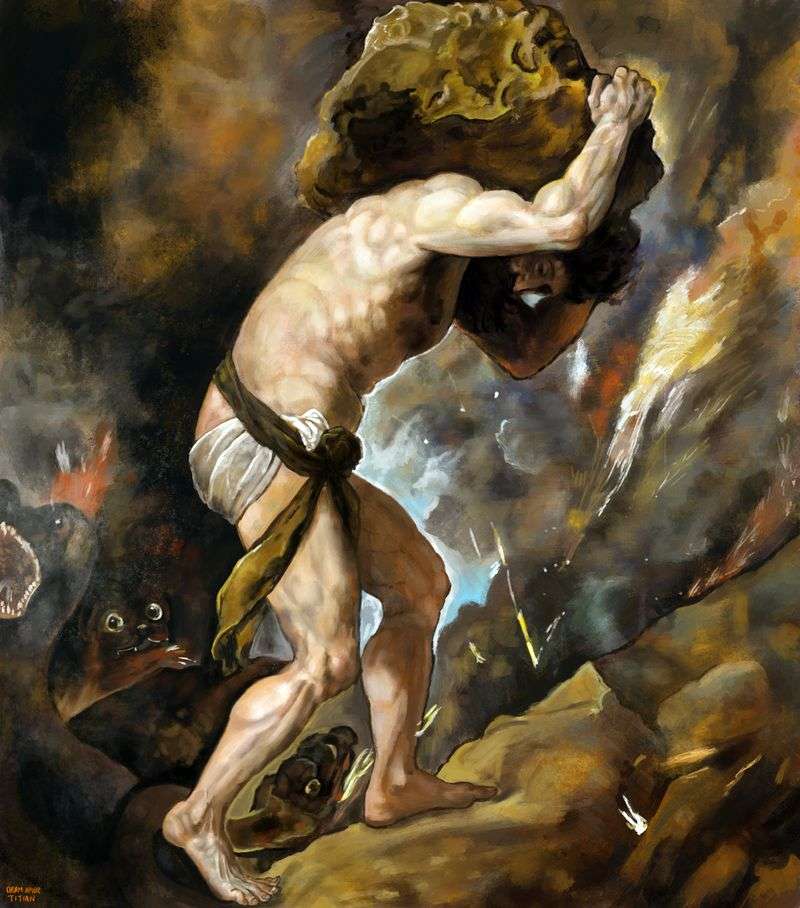
Painting by artist Tiziano Vecellio “Sisyphus”. The size of the picture is 237 x 216 cm, canvas, oil. Deucalion had a grandson of Aeolus, whose son, Sisyphus, the founder of Corinth, was the most cunning of all mortals. Once he discovered the whereabouts of Zeus to the river god Ason for his promise to lead the river to the Corinthian Upland. Ason kept his word, and the well-known source of Pirenha scrambled out of the rock.
Zeus decided to punish treacherous Sisyphus and sent Thanatos to him. But the cunning king shackled her in strong chains, so that no one in the country could die. Finally, the god of war Ares came and freed Death, and Sisyphus was cast into hell. But here Sisyphus was able to deceive the gods. He forbade his wife to make funeral sacrifices on it. Their absence angered the entire underworld, and Persephone allowed Sisyphus to return to earth to remind the negligent wife of her responsibilities.
Returning to his kingdom, the cunning king and did not think about returning to the underworld and again happily healed in his magnificent palace. Once, when he was sitting at the table, enjoying rich food, Death came to him unexpectedly and brought him back to the underworld. There I comprehend his punishment: he had to drag a huge marble block to a high mountain. Only when he reached the top and tried to fortify the stone there, he broke down and again rolled down, and the unfortunate criminal once again took up his hard work in vain. And this lasted for a century… Until now, a fruitless, vain work is called “Sisyphus”.
Late Titian deployed poses the problems of color harmony in painting, as well as the problem of creating expressive techniques for a free and accurate pictorial brushstroke. The smear acquires a special significance, it not only transmits the texture of the material, but its movement sculpts the very form – the plastic of the object. The great dignity of the late Titian’s creative language is that the structure of the smear gives an example of the realistic unity of the artistic and psychological moment.
The athletic figure, illuminated by the last sunset rays of the sun, was molded in a textured and expressive manner, the muscular body firmly merged with the stone block, not yielding to it in hardness. It creates a purely physical sense of stopping the flow of time and the endlessness of the heavy useless work of the ancient hero.
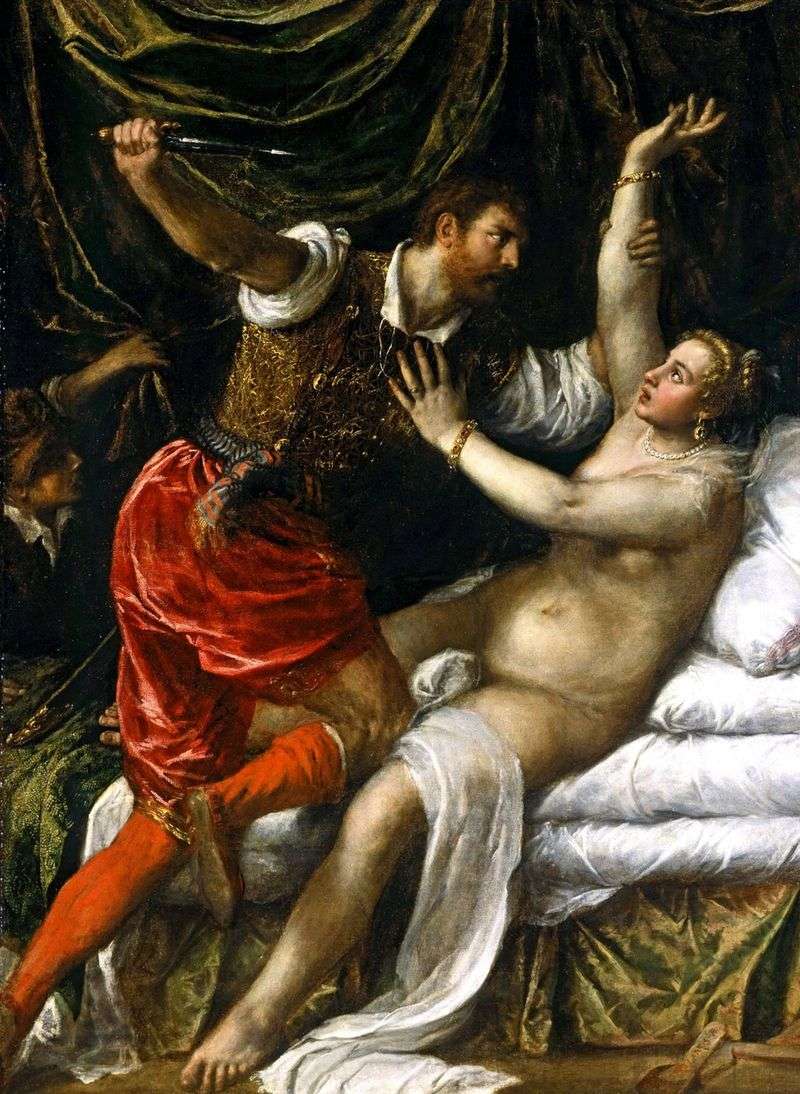 Tarquinius and Lucretia by Titian Vecellio
Tarquinius and Lucretia by Titian Vecellio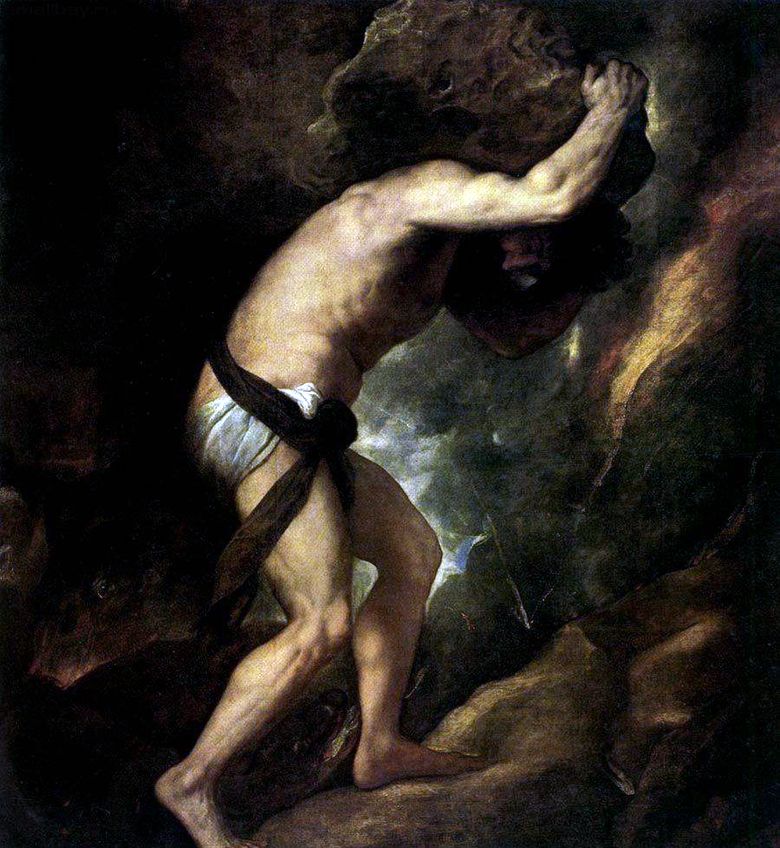 Sisyphe – Titian Vecellio
Sisyphe – Titian Vecellio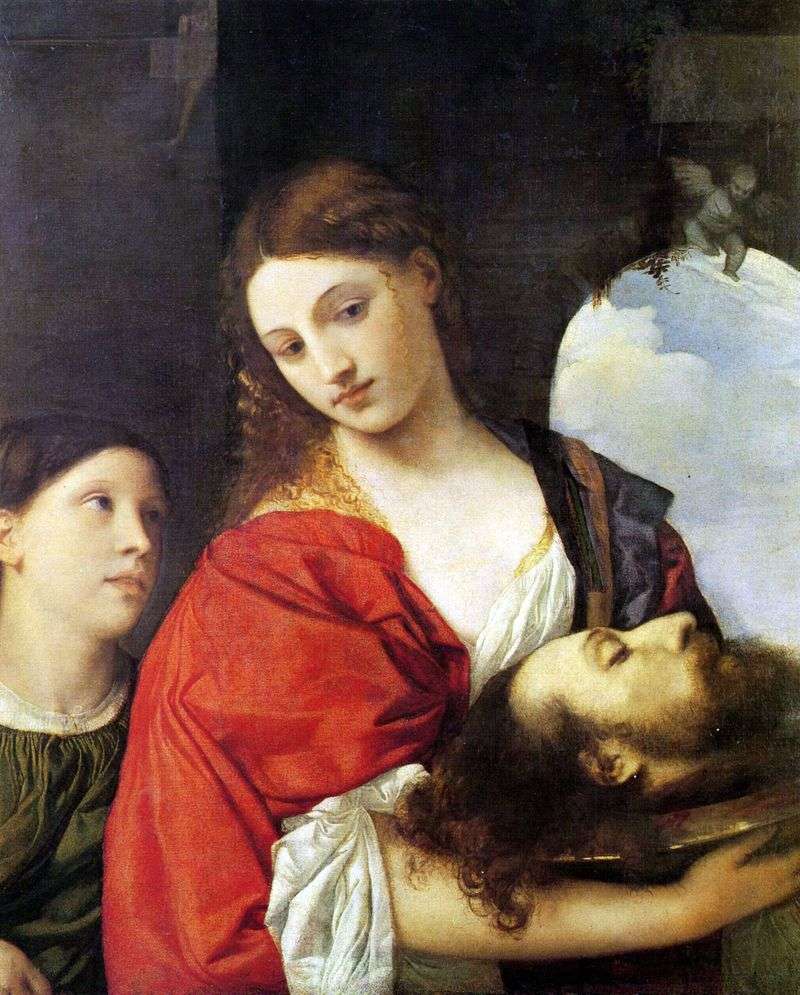 Salome by Titian Vecellio
Salome by Titian Vecellio Venus and Adonis by Titian Vecellio
Venus and Adonis by Titian Vecellio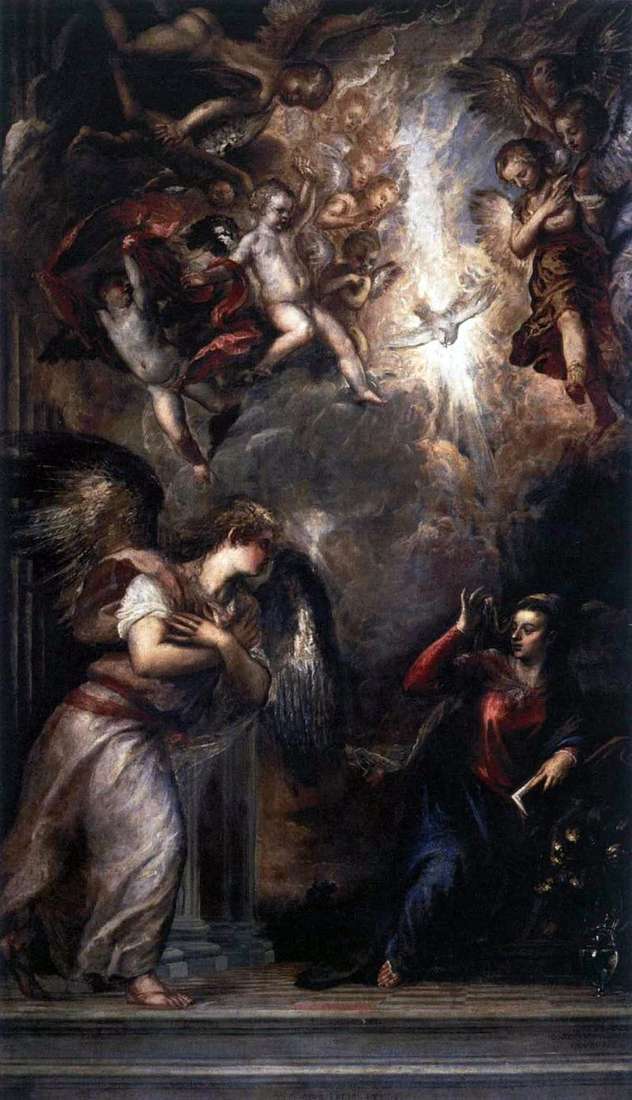 Annunciation by Titian Vecellio
Annunciation by Titian Vecellio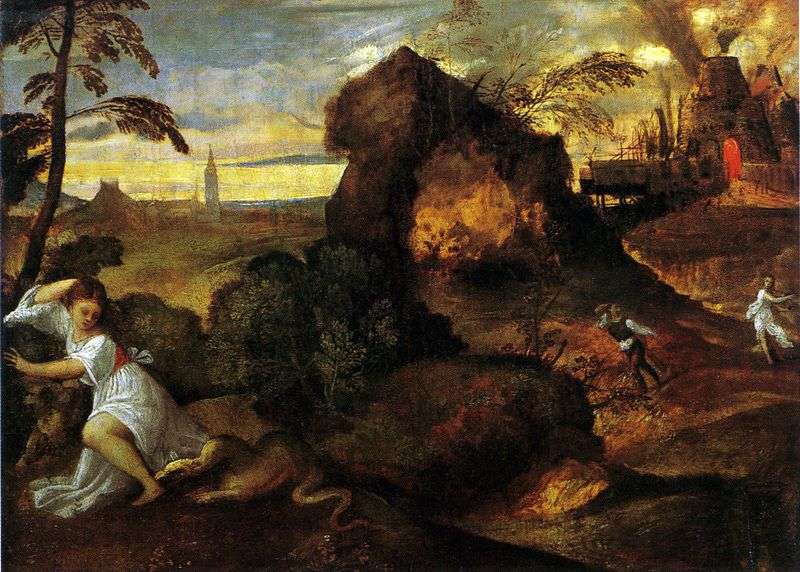 Death of Eurydice. D by Titian Vecellio
Death of Eurydice. D by Titian Vecellio Portrait of the daughter of Titian Lavinia by Titian Vecellio
Portrait of the daughter of Titian Lavinia by Titian Vecellio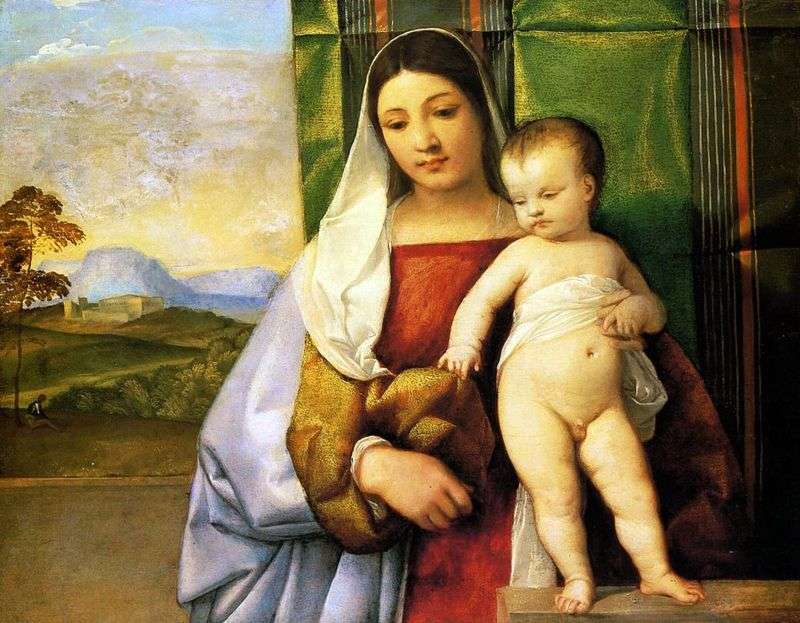 Gypsy Madonna by Titian Vecellio
Gypsy Madonna by Titian Vecellio